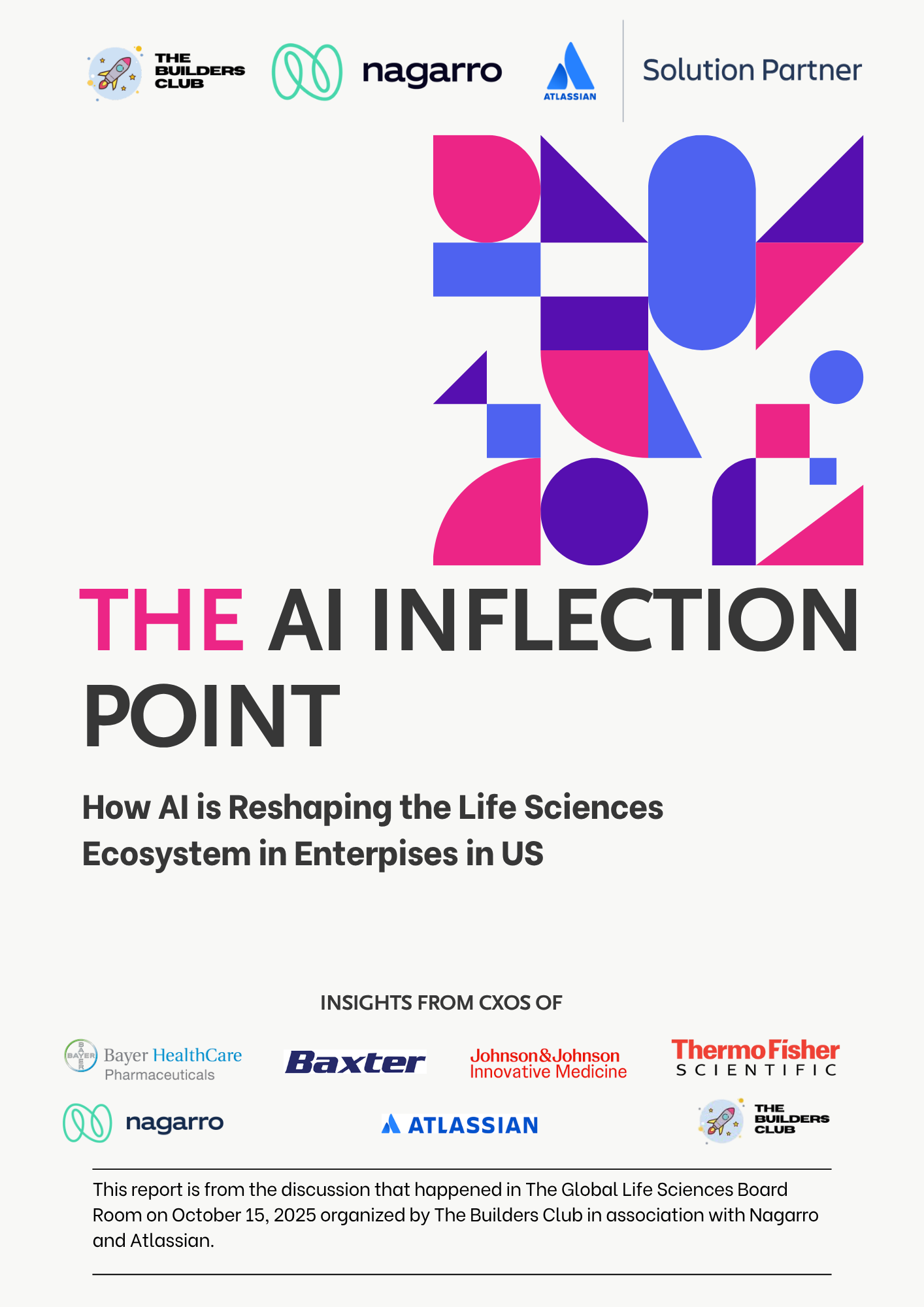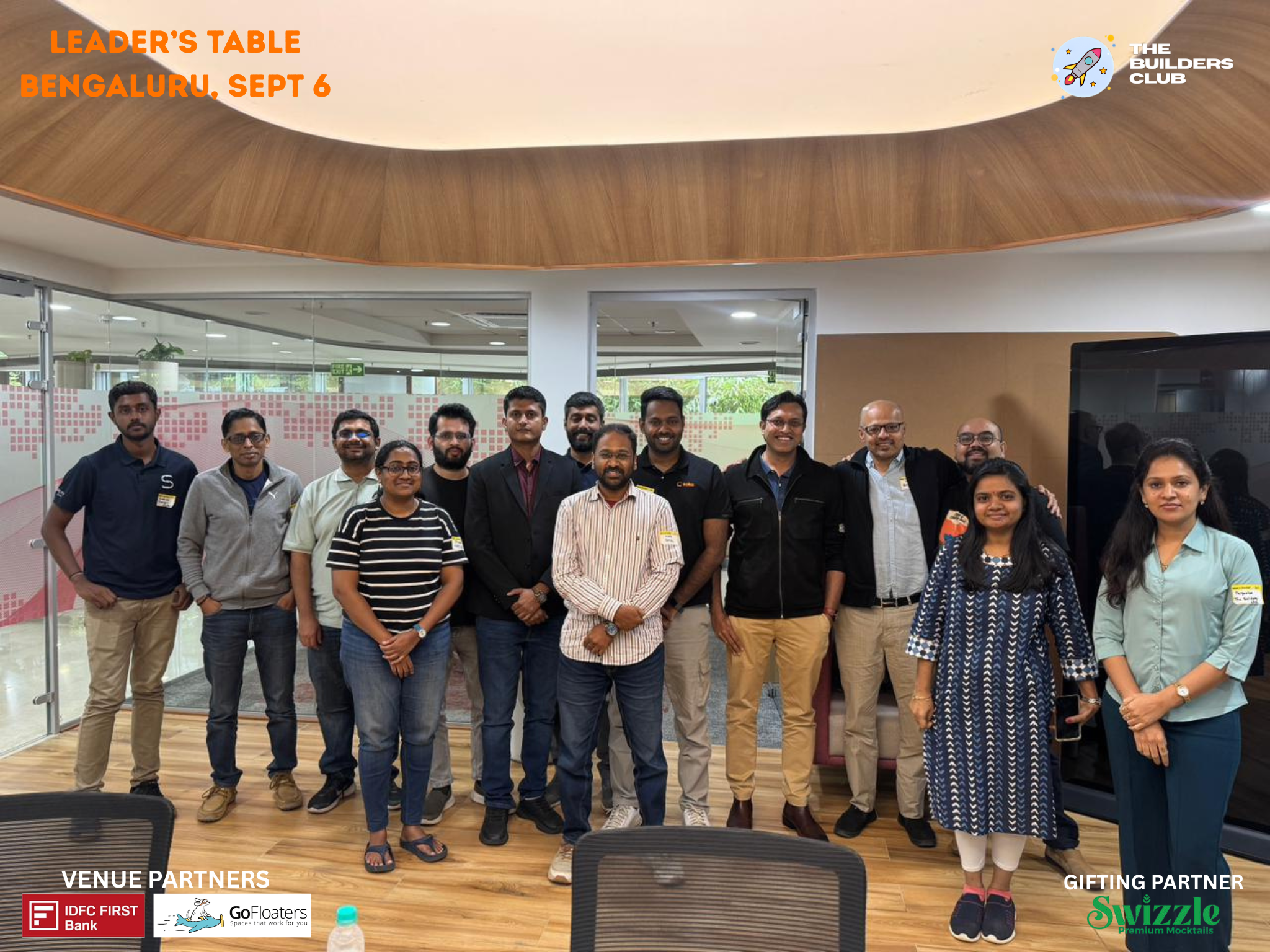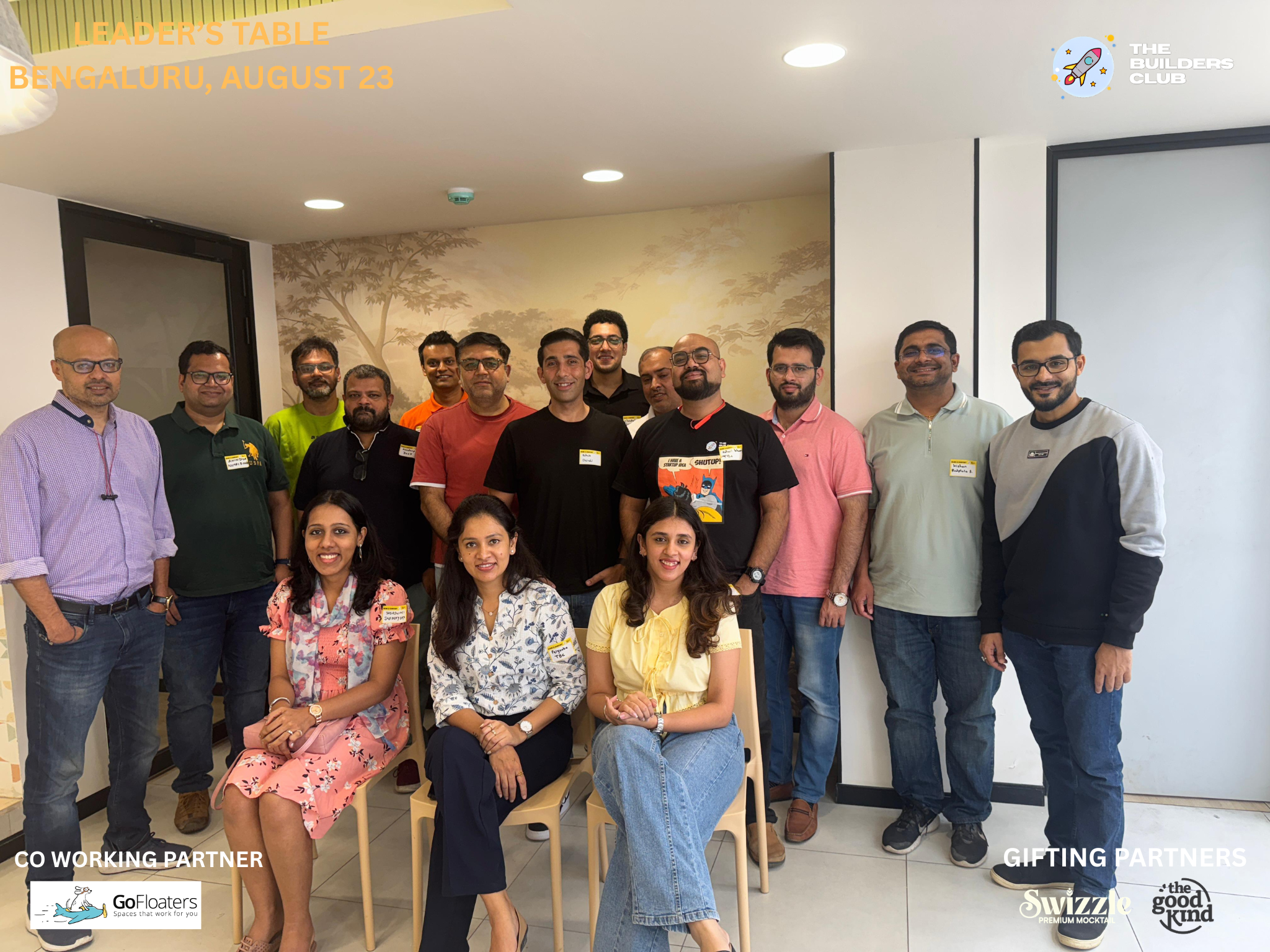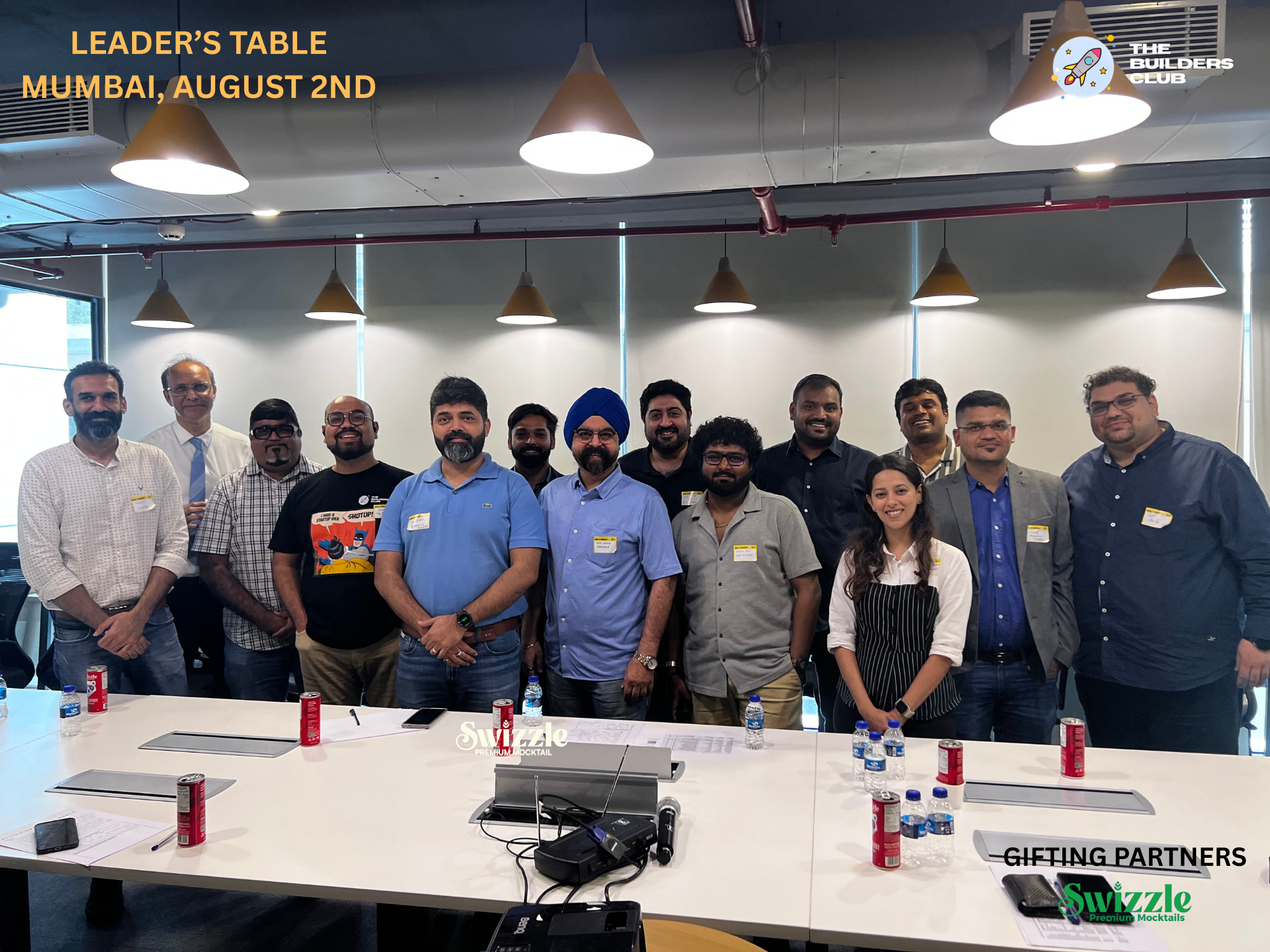The AI Inflection Point: Reshaping the Life Sciences Ecosystem
In a recent Life Sciences boardroom hosted by The Builder Club in partnership with Nagarro and Atlassian, a group of industry leaders convened to cut through the hype surrounding artificial intelligence. The session’s purpose was to foster a real conversation about how AI is tangibly reshaping discovery, delivery, and the operational rhythm of the life sciences, pharma, and healthcare industries. Against a backdrop of accelerating drug R&D, rising regulatory demands, and an intensifying drive for personalized patient care, this dialogue explored what is actually changing inside the labs, data centers, and boardrooms. The insights shared by this panel provide a high-fidelity map of an industry at a critical inflection point, moving beyond hype to execution where the convergence of human and artificial intelligence is now the primary force multiplier for innovation.
The Panel of Experts: Voices from the Forefront
The discussion was enriched by a diverse panel of experts, each pushing the boundaries of technology and science within their respective domains.
| Expert & Affiliation | Domain of Expertise |
| Ashwin Chandramouli, Portfolio Growth, Baxter | Driving the integration of AI and digital health to connect clinical needs with technical innovation. |
| Asha Mahesh, Senior Director of R&D Data Science, J&J Innovative Medicine | Leading the deployment of AI to convert biological insight into predictive models for discovery and clinical trials. |
| Kumudha Narayan, Director of IT, Thermo Fisher Scientific | Overseeing the digital platforms and infrastructure that underpin R&D, ensuring IT systems enable agility and compliance. |
| Vinod Das, Associate Director, Bayer Healthcare Pharmaceuticals | Driving an “AI literacy” movement within Bayer R&D to augment human expertise with digital and scientific transformation. |
| Arun Changamveetil, Head of Partner Solutions, Americas, Atlassian | Strategizing how platform technologies can be extended through partnerships to solve complex team collaboration challenges. |
| Vlad Neste, Director, Life Sciences & Healthcare Practice, Nagarro | Leading Nagarro’s strategy to help pharma, biotech, and med-tech clients adopt AI and digital engineering. |
| Vivek Bhide, Director & Co-head, Global Atlassian Practice, Nagarro | Leading global delivery and partnerships to help enterprises achieve digital transformation through the Atlassian ecosystem. |
The Market at a Tipping Point: Quantifying the Opportunity
The strategic conversations taking place across the industry are substantiated by powerful market indicators. In the United States, the AI and life sciences analytics market was estimated to be approximately 600 million in 2024**. It is projected to surge to almost **1.7 billion by 2034, reflecting a compound annual growth rate (CAGR) of 11.3%. The global picture is even more dramatic; the worldwide AI in life sciences market is forecasted to reach nearly $14.2 billion by 2024, expanding at a remarkable CAGR of 20.2%. These statistics provide undeniable evidence that the industry is at a significant inflection point where the tools are maturing and adoption is accelerating rapidly, moving AI from a theoretical advantage to a core competitive necessity.
AI in Action: From Strategic Imperative to Tangible Impact
While many organizations remain mired in AI theory, a clear pattern of practical application is emerging among industry leaders. The following examples are not isolated pilots but strategic deployments targeting the industry’s most persistent pain points: workforce strain, clinical trial inefficiency, and a sluggish innovation culture. These initiatives showcase how leading organizations are translating AI potential into operational reality, moving from experimentation to enterprise-scale impact.
Augmenting the Human Element: Alleviating Staff Burdens
A primary front for AI adoption is in alleviating workforce burdens, a theme echoed across different operational domains. At Baxter, for instance, the focus is on deploying voice technology in clinical settings to combat the cognitive overload, staff shortages, and burnout straining healthcare staff. In parallel, Thermo Fisher Scientific is applying AI to its internal IT organization, using it to streamline change management and guide users through complex systems—proving that augmenting the human element is as critical in the back office as it is at the patient’s bedside.
Accelerating Clinical Pathways: Precision in Patient and Site Selection
Johnson & Johnson Innovative Medicine has successfully operationalized AI for over five years to fundamentally enhance its clinical trial processes. As described by Asha Mahesh, J&J developed a sophisticated model that analyzes vast datasets, including real-world data and historical study performance, to identify specific patient populations and recommend the most optimal clinical sites and countries for a given trial. This AI-driven approach has a proven track record, having been instrumental in relaunching trials that were put on hold during the pandemic. By improving the probability of enrollment success, this initiative directly tackles one of the most significant challenges in drug development, demonstrating AI’s power to bring treatments to patients faster.
Fostering an Innovation Culture: The Power of Enterprise-Wide AI Access
In a bold move to embed an AI-native culture, Bayer rolled out its “myGenAI assist” platform in early 2023, as detailed by Vinod Das. This initiative provides all employees with direct access to a range of powerful Large Language Models (LLMs) like Gemini and Anthropic. The strategic rationale was to prioritize ease of use and accelerate experimentation across the entire organization, deliberately avoiding the delays associated with traditional, siloed pilot programs. By democratizing access to cutting-edge AI tools, Bayer is fostering a ground-up innovation movement, enabling teams across the business to discover and implement AI-driven efficiencies. This enterprise-wide cultural shift is creating the fertile ground needed to tackle AI’s most ambitious application: redefining the frontier of Research and Development itself.
The New R&D Frontier: Reimagining Discovery and Development
Research & Development stands as one of the most promising and complex arenas for AI-led transformation in the life sciences. The journey from a promising molecule to a market-ready therapeutic is fraught with challenges that AI is uniquely positioned to address. This section explores how AI is being deployed to augment the work of scientists, unify siloed institutional knowledge, and help organizations navigate the critical tension between the speed of innovation and the rigors of regulatory compliance. The insights from the panel reveal a new frontier where data-driven intelligence is becoming an indispensable partner in scientific discovery.
From Wet Lab to “Lab in the Loop”: The Reality of AI in Discovery
A realistic assessment of AI’s current role in drug discovery reveals it as a powerful augmentative tool rather than a wholesale replacement for traditional science. Vinod Das of Bayer noted that the industry is still “scratching the surface” and that today’s model is best described as “lab in the loop,” where the wet lab remains essential. AI’s primary function is to enhance the capabilities of scientists through:
- Rapid hypothesis generation
- Virtual screening of molecules
- Predicting molecular properties to identify promising targets
Echoing the theme of incremental progress, Asha Mahesh of J&J issued a crucial call to action for greater industry collaboration. She highlighted the “Lilly Tune Lab” initiative—where a major pharmaceutical company has made billions of dollars’ worth of data available—as a new model for the industry. By sharing data and working collectively, organizations can accelerate the development of AI models that advance discovery for everyone.
Breaking Down Silos: The Strategic Value of a Unified Knowledge Fabric
One of the greatest barriers to R&D productivity is knowledge fragmentation, with genomic data, lab notebooks, and regulatory documents often existing in disconnected silos. Arun Changamveetil explained Atlassian’s approach to solving this with its Teamwork Graph. This technology acts as a metadata or knowledge layer, connecting disparate information sources to function as a “memory layer” for an organization’s R&D efforts. This concept of a unified knowledge fabric addresses what is arguably the costliest bottleneck in R&D: the inability to learn from an organization’s own collective history. Critically, this approach aims to solve a missing link in the innovation pipeline by translating AI outputs (like AlphaFold’s protein structure predictions) directly into actionable team workflows, such as automatically linking a prediction to a validation task in Jira.
The Race for Agility: Balancing Speed with Compliance
The life sciences industry operates under a unique tension between the need for speed and the non-negotiable requirement for regulatory adherence. Ashwin Chandramouli of Baxter asserted that in today’s landscape, speed will ultimately win, as being first-to-market provides invaluable learning cycles that compound over time. This drive for speed creates what Arun Changamveetil described as the industry’s core paradox: the need to “move fast but stay compliant.” Ultimately, the panel’s discussion framed this balance not as a trade-off but as the central strategic challenge that modern life sciences organizations must solve. Success depends on implementing integrated platforms that build traceability and governance directly into agile workflows. Achieving this difficult balance between agility and compliance, however, is not merely a matter of process; it depends entirely on the robust technical and data foundations that underpin the entire enterprise.
Building the Foundation: Navigating Infrastructure, Data, and Governance
Successful and scalable AI implementation depends entirely on a robust, well-governed technical foundation. The most sophisticated algorithms are rendered ineffective without the right infrastructure, clean data, and clear governance frameworks. This section examines the critical decisions leaders must make regarding infrastructure deployment, data management, and enterprise-wide governance, revealing the trade-offs and differing philosophies at play. Getting these foundational elements right is a prerequisite for unlocking the full transformative potential of AI.
The Infrastructure Trilemma: On-Premise, Cloud, and Hybrid Models
As Kumudha from Thermo Fisher explained, there is no “one-size-fits-all” solution for AI infrastructure. The choice between on-premise, cloud, or hybrid models is driven by a consistent set of trade-offs tailored to specific organizational needs and regulatory constraints. The primary drivers for these decisions include:
- Data Residency and Privacy: In highly regulated sectors, on-premise infrastructure offers maximum physical control over where data resides and is processed, simplifying compliance with jurisdictional requirements.
- Latency and Performance: Keeping compute power close to massive datasets—whether through on-premise centers, edge computing, or hybrid models—is critical to avoid network bottlenecks and ensure real-time performance.
- Risk and Intended Use: As Asha Mahesh pointed out, a risk-based framework is essential to determine which compute workloads can operate at the edge versus those that must remain in a more controlled on-premise or private cloud environment.
The Governance Gauntlet: Security, Regulation, and Corporate Adoption
The adoption of powerful new AI tools, particularly generative LLMs, has revealed two distinct enterprise philosophies for managing risk and fostering innovation. The first is a cautious, controlled approach, with leaders like Asha Mahesh describing the challenges at J&J of identifying “AI-ready” data from legacy systems and navigating a restrictive security posture that limits access to external models. In stark contrast, Bayer represents a more open model.
As detailed by Vinod Das, their strategy involved rapidly deploying a wide range of LLMs to an enterprise-wide experimental platform, relying on a security team to implement guardrails “behind the scenes” without constraining user access.
The chasm between these two philosophies was palpable during the discussion, with J&J’s Asha Mahesh directly asking of Bayer’s open model, “how did you guys do that? I’d love to learn from you”—a clear indication of the real-world governance dilemmas leaders are facing. These foundational debates on infrastructure and governance set the stage for the next evolution, shaping the path forward for how AI will be deployed and scaled across the life sciences ecosystem.
The Path Forward: Charting the Future of AI in Life Sciences
As the life sciences industry moves beyond initial AI adoption, the trajectory of innovation is becoming clearer. The panel’s discussion provides a roadmap for what lies ahead, highlighting key shifts in technology, strategy, and organizational mindset. This concluding section synthesizes these predictions to outline the future of AI in the industry, focusing on evolving technological models, the transformation in organizational strategy, and the most critical takeaways for leaders aiming to navigate this new landscape successfully.
The Rise of Hybrid Intelligence: Learning Globally, Acting Locally
A dominant future trend identified by Vlad from Nagarro is the rise of hybrid AI, built on the principle of “systems that learn globally but act locally.” This model combines the power of cloud-based machine learning with the immediacy of edge computing, enabling intelligent action at the point of need. This paradigm will manifest in several concrete ways:
- Pharma Manufacturing: Edge AI integrated into manufacturing devices will predict batch deviations in real-time, preventing costly errors.
- Clinical Trials: Decentralized trials will become more intelligent through sensors and smart patient engagement tools that process data locally.
- Care Delivery: Diagnostic devices with onboard AI will provide clinicians and patients with instant insights at the point of care.
As Nagarro envisions it, the future is one of “AI that learns in the cloud, acts at the edge, and stays compliant anywhere in between.”
From Point Solutions to Integrated Platforms
A fundamental shift is underway in how health systems and life sciences organizations procure and implement technology. Ashwin Chandramoulii observed that the market is decisively moving away from best-in-class but siloed point solutions that solve a single, narrow problem. Instead, organizations now demand integrated platforms that can solve a wide host of use cases. This shift reflects a new calculus where enterprise-wide connectivity and data flow are paramount. In this new environment, a solution that is “good enough” but fully integrated into a central platform is often preferable to a disconnected, single-purpose tool.
Conclusion: Key Strategic Takeaways for Industry Leaders
The rich discussion among the panelists distills into three clear strategic imperatives for leaders navigating the AI-driven transformation of the life sciences industry.
- Embrace Augmentation over Automation: The primary value of AI today lies in its ability to augment skilled professionals—from clinicians facing burnout to scientists tackling complex hypotheses. The focus should be on using AI to reduce cognitive load, accelerate insight, and free up human experts to perform higher-value work, not on replacing them.
- Prioritize a Unified Data & Collaboration Fabric: The single greatest accelerator for R&D and operational agility is the ability to break down historic data silos. Investing in platforms that connect disparate knowledge sources into a unified, traceable workflow is essential for unlocking deeper insights and translating them into action faster.
- Culture is the Catalyst for Adoption: Technological capability is only half the equation. The organizations that will lead the next wave of innovation will be those that foster a culture of rapid experimentation, governed by smart, enabling guardrails rather than prohibitive restrictions.





